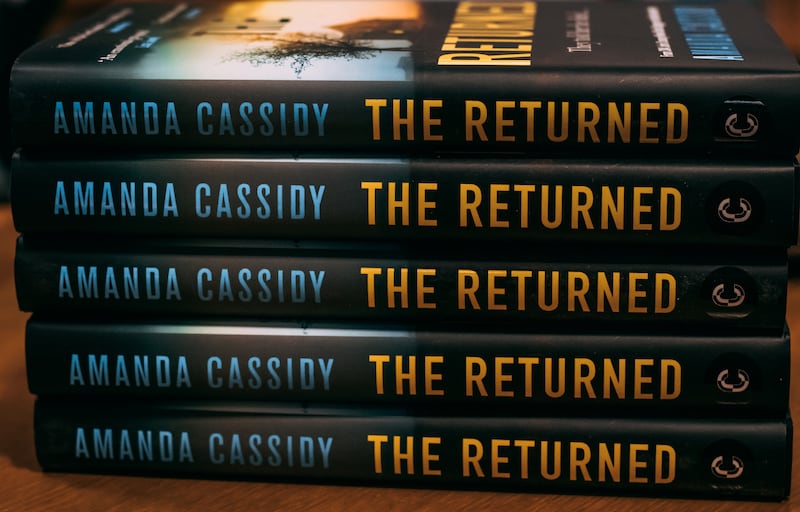The opening scene of my second novel is a mother running into a burning building – her family home – where her sons have been sleeping upstairs. Nancy tucks her face into her elbow and battles the thick black smoke, making her way up the stairs. At the top hallway, she makes a sickening split second choice. She runs into her five-year-old son’s room but there’s no sign of him. Stemming her streaming eyes with the bony part of her shoulder, she drags herself into the baby’s room where “everything is black or blackening”.
Nancy, the young mother, searches his cot frantically. There’s no doubt in her mind. Her baby is gone. Then the flames overwhelm and she’s forced from the house by members of the fire brigade. Her older son is discovered safe outside the house with his father. Later, in hospital Nancy is told that her baby perished in the blaze. However, she is adamant that her baby son, Liam was taken. Sad, tilted heads blame her protestations on grief, and the mother is dismissed as delusional even by her own husband. Then, six years later, Nancy spots her child on the street.
But would a mother always know her own child? And why has everyone in the small Irish village of Currolough seemingly been lying to her?
Writing that opening scene came easily, but it was also extremely hard. Joan Didion famously said ‘I don’t know what I think until I write it down,’ and for me, writing The Returned brought clarity to a frightening incident that happened in my own life.
Almost a decade ago, I stood watching flames engulf my home, my new-born clutched in my arms, my toddlers clinging to my legs. It was unimaginably awful; calling 999 with shaking fingers, trying to shield the children from what was happening, while watching helplessly as everything we’d worked for went up in flames.

Nobody was hurt. We rebuilt and we moved on, feeling extremely lucky that things might have been so different. But for months I couldn’t put the baby out of my arms. For a long time I had nightmares that I was running into the burning house with the children inside. In my dreams, I’d push open doors into smoke-filed rooms, trying to find my babies. I lived that opening scene again and again in my mind, so I knew exactly how my character Nancy would react, and how it might feel.
As much as I drew on my own experience, I retrospectively saw my own experience through Nancy’s eyes. I was with her as she dragged herself through the ‘mesmerizing heat’ searching for her child. I was with her as she watched in horror the ‘whoosh and crackle’ of the bedroom drapes as they swayed grotesquely in the windows. It was only by making up these small details within the story that I could process my own story. It was the only way I could really delve into how damaging those orange flames that swallowed up my home had been.
In another scene, the detective looking into the case walks through Nancy’s house after the fire, avoiding broken glass under her feet. That’s my overriding memory as I walked through my own house in the days after the blaze; framed family photographs once proudly hung on the wall, now lying sodden and smashed underfoot.
It’s often said that what may be difficult to express out loud can be readily given voice through writing. It was, of course, cathartic to write a story that I could control from behind the safety of my keyboard. But the biggest surprise was where this story took me next.
The detective duo, the abrasive Ally Fields and enthusiastic newbie Clarke Casey, jumped onto my page and ran away with the rest of the story. Their contrasting dynamic has made this novel so much more than a crime story. Detective Sergeant Fields is tasked with investigating a suspected arson attack in her home town which seems to have links to the fire in which Nancy lost her son. But Ally is heavily pregnant with her boss’s child, and returning to the town where she grew up comes with its own emotional challenges.
Idealist Clarke Casey, described as ‘all pure joy and bubbles under his Hugo Boss shirt’, initially seems to exist solely to bring a balancing levity to the darkness of this story. But like all good stories, nothing is what it seems. The Returned has gone to places I couldn’t ever have imagined writing. I love that I never knew what was going to happen when I sat down to write.
Real or imagined, compelling stories come from the ripples of trauma that stem from crime. As a journalist, I watched first-hand and reported on all sorts of those injustices. As a fiction writer, I have more freedom to toy with such ‘worst-nightmare’ scenarios. My debut novel Breaking had similar themes; split-second choices with far-reaching consequences.
Is it because we want to play God? Or to sate our control-freakism? On reflection (three novels in), I believe it’s more likely a way of connecting – of saying: imagine this terrible thing happened to you. This is how you would probably feel, and I feel this way too.
The Returned is published by Canelo Crime



















